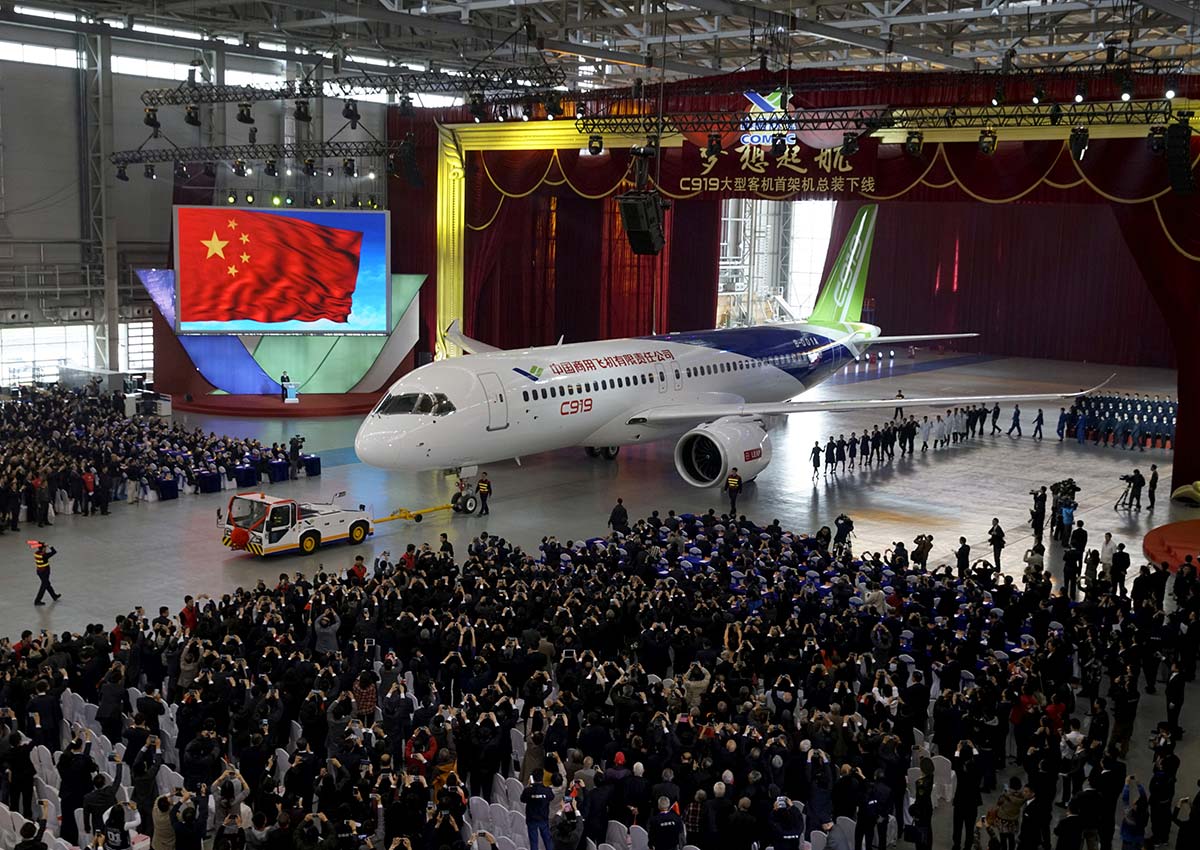China's Sputnik Moment
by Gorlen Zhou and Matthew Strauss,
Signature Global Asset Management, CI Investments
October 11, 2017
Share Article
by Gorlen Zhou and Matthew Strauss, Signature Global Asset Management, CI Investments
Many economists express doubts about China's ability to move up the value chain to attain the status of a higher-income economy, especially since China started losing its competitiveness in light manufacturing to other emerging countries. Chinese policymakers have themselves questioned whether China could break out of the so-called middle-income trap.
The key factors for breakout include: human capital, technological upgrade, government support and financial markets. China has demonstrated their commitment to move in all these areas.
We assert that a breakthrough moment has arrived in 2017 where China has attained the critical enabling factors to escape the middle-income trap. We are calling this “China's Sputnik moment,” as the rest of world realizes the progress the country has made in this direction.
of China's move up the value chain
Human capital
Since the 90s, the pace of China’s economic growth has been staggering. Just as astonishing but often overlooked are their investments in education. Government expenditure on education increased from USD 11 per capita in the early 90s to USD 413 per capita in 2016, or to over 5% of GDP—the same level as the U.S.[1] Since 1990, the number of universities and university graduates (Figure 1 and Figure 2) has increased 2.5 times and 12.5 times, respectively. Every year, close to eight million university graduates join the workforce and are able to contribute to China’s technological upgrade.
In 2017, the Chinese government plans to incorporate artificial intelligence into primary and secondary schools’ curriculum. K-12 students will learn how to develop video games, build robots and write computer programs. The younger generation will drive the country towards the 2030 goal: to transform China into a technological innovation-driven economy.
Technological upgrade
The rapid increase in wages has put China at a cost disadvantage when competing with countries such as Laos, Philippines, Thailand, and Vietnam for low-end assembly contracts. China’s garment, footwear, and toy exports used to account for more than 20% of the total exports in early 2000 (Figure 3); now they account for only 11%. Because of escalating wages, China will have to compete for higher-value manufacturing contracts, and China is making the transition on the back of government support and higher-educated workers. China’s exports of hi-tech products (Figure 3) have grown from less than 20% of the total exports in early 2000 to 31% in 2016, offsetting the slowdown in low-end assembly.
Being the largest developing economy in the world with more than a billion consumers, China has unique advantages in developing and acquiring new technologies. Multinational corporations (MNCs) like ABB, Siemens, General Motors, Toyota, etc. want to grow their business in the largest developing economy and in exchange for market access, often share their technologies with their Chinese partners. This is happening across numerous sectors. In recent years, China has moved up the value chain in nuclear-power generation and high-speed rail, and now China is developing expertise in electric vehicles (EVs), robotic arms, semiconductor devices, aircraft engines, metamaterials and artificial intelligence—to name but a few industries.
Technology is transforming many aspects of daily life in China. E-commerce and internet giants like Alibaba, JD.com, and Tencent have created a mobile ecosystem that offers enhanced user experiences with functions like mobile payment, mobile shopping, food delivery, purchasing of movie tickets, calling taxis, etc. These apps serve to make China’s 700 million-plus smartphone users’ lives easier and their work more convenient. It is common to see Chinese consumers pay their bills by tapping the phone on the point-of-sale machine and to shop online via the smartphone while taking the subway home. China has the most developed e-commerce ecosystem in the world by far. According to the latest number, 40% of the population in China shop online; 22.3% of the online purchase was done via phone in China versus 4.5% in North America. The rapidly rising smartphone adoption rate and the highly developed mobile ecosystem will continue to help fuel the growth of Alibaba, JD.com, and Tencent.
In addition to the deep talent pool and the technological upgrade, the government’s continued support is vital for the country to transform to a technology-driven economy.
Government support
To become a technological innovation-driven economy, the government has laid out a plan called “Made in China 2025” to focus on the technological upgrades in 10 key sectors, including advanced rail and equipment, aviation and aerospace, agricultural machinery and technology, power equipment and technology, electric vehicles, new materials, high-end manufacturing control equipment and robotics, biopharmaceuticals and high-end medical equipment, advanced marine equipment and high-tech vessels, and lastly integrated circuits and new-generation information technology. For example, the Chinese government will allocate USD 150 billion to develop its domestic semiconductor industry in the next 10 years. The country aims to improve the self-sufficiency rate of semiconductors from 9% in 2015 to 70% in 2025. The state-owned company Tsinghua Unigroup set up the country’s largest chip maker called “Yangtze River Storage Technology (YMTC)” in late 2016, to focus on DRAM and NAND Flash. The company plans to invest RMB 180 billion in the next five years.
The government gives tax incentives to companies that spend on R&D (research and development). China’s R&D spending has risen to 2.1% of GDP in 2016, and currently surpassed the UK, EU and Canada in terms of R&D spending to GDP[2]. Only the U.S., Japan and Germany spend more on R&D in relative terms, and only the U.S. spends more than China in absolute terms.
It is true that China is no longer competitive in making shoes and toys, but China is set to emerge as a serious competitor in the next three to five years, setting itself up against MNCs like ABB, Boeing, General Motors, and other global giants. Case in point: A recent article in India Times proclaimed “German quality at Chinese prices.” Chinese auto company SAIC has accumulated know-how by working with its partners General Motors and Volkswagen, and now the company is making and selling automobiles in India at a much lower price than GM and Volkswagen.
Improving capital markets
The financial market plays a crucial role in procuring funding for companies’ future expansion and R&D expenditure. Since the equity market crash in the second half of 2015, the Chinese government overhauled the financial system to restore investors’ confidence. China’s IPO market has rebounded since then. The number of listings in China has surged 300% year over year in the first half of 2017, to become the top IPO market worldwide.
The recent announcement of the MSCI A-share inclusion will lead to increased proportion of foreign investors, which will help to transform the A-share market into a mature market to support China’s long-term economic growth.
For companies unable to tap the traditional capital markets, such as tech startups that haven’t generated net income, the continued growth in private equity and venture capital within China have created a more formal way for these companies to access capital. China is one of the world’s largest markets for private equity and venture capital. Venture capital-backed financings in China accounted 21% of the global transactions in 2016, only behind North America.
Conclusion
China’s investment in education and R&D (including technology), the opening up of financial markets, and the government’s commitment to support these initiatives lead us to believe China has what it takes to move up the value chain.
The development is akin to Japan’s or Korea’s rise but with greater scale and consequences for the global economy. This represents a challenge to the traditional Western private sector model as it is now facing a new global competitor in the form of giant state-owned, state-directed and/or state-supportted entities. This will lead to turbulent trade relations in the years ahead. The path to a “higher value-added China” will ruffle feathers and in the process will not only bring about new investment opportunities, but will also pose a threat to a large number of MNCs in the U.S., Europe, and Japan. Global investors should keep both sides in mind.
We at Signature believe it is very important for you and your clients to fully understand the implications of this evolving Chinese economy. As you may already know, Signature opened an office in Hong Kong in 2014 to enable us to be on the ground and better develop connections in China. In October 2017, we will also be moving a full-time trader from our Toronto office to our Hong Kong office to join Gorlen and Jason.
This commentary is published by CI Investments Inc. It is provided as a general source of information and should not be considered personal investment advice or an offer or solicitation to buy or sell securities. Every effort has been made to ensure that the material contained in this commentary is accurate at the time of publication. However, CI Investments Inc. cannot guarantee its accuracy or completeness and accepts no responsibility for any loss arising from any use of or reliance on the information contained herein. This commentary may contain forward-looking statements about the fund, its future performance, strategies or prospects, and possible future fund action. These statements reflect the portfolio managers' current beliefs and are based on information currently available to them. Forward-looking statements are not guarantees of future performance. We caution you not to place undue reliance on these statements as a number of factors could cause actual events or results to differ materially from those expressed in any forward-looking statement, including economic, political and market changes and other developments. Commissions, trailing commissions, management fees and expenses all may be associated with mutual fund investments. Please read the prospectus before investing. Mutual funds are not guaranteed, their values change frequently and past performance may not be repeated.

